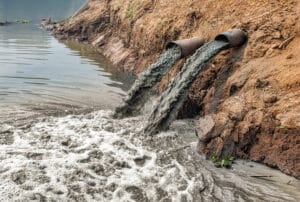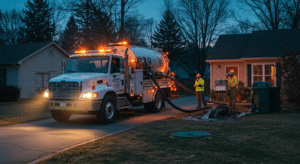Between 1998 and 2004, samples taken from several Suffolk County waterways found traces of Pfiesteria. Like many other types of microalgae or phytoplankton, Pfiesteria contributes to harmful algal blooms that can adversely affect the people, marine life, and wildlife that enjoy coastal waterways.
If you live in Suffolk County, it’s important to understand what Pfiesteria is and how it may affect your health and your local water resources.
What is Pfiesteria?
Pfiesteria is a toxic dinoflagellate that has been linked to fish kills along coastal waters from Delaware to North Carolina. Samples taken from Suffolk County waterways found Pfiesteria to be widespread in our area, but the cold waters of Long Island aren’t thought to be optimal for toxin production or bloom formation.
However, the effects of climate change may change this, and in the future, Long Island’s waterways may become the optimal environment for growth.
Pfiesteria has a complex life cycle, and the organism can take on a number of forms. Unfortunately, some of these forms produce toxins that can harm marine life.
What Causes Pfiesteria to Grow?
The conditions that cause Pfiesteria to bloom and become toxic are not well understood, but they include:
- Warmer water temperatures
- Brackish salinity (the mixing of salt and freshwater)
- High nutrient levels (nitrogen and phosphorus)
- Poorly flushed waters
Like other harmful algal blooms, excess nutrients, such as phosphorus and nitrogen are a major contributor to the problem. The primary sources of nutrient pollution are:
- Septic tanks
- Sewage treatment plants
- Runoff from farms, suburbs and cities
- Air pollution that settles into the water
How Does Pfiesteria Affect Public Health and Marine Life?
Pfiesteria’s impact on personal health was first seen in laboratories, but this changed in 1997 in Maryland when high-levels of Pfiesteria activity were recorded in the Pocomoke River.
Analysis of individuals with high levels of exposure to the affected waterways (especially those with skin lesions) showed difficulties with learning and memory that remained for months after exposure.
Biopsies found evidence of toxic and allergic inflammation. In addition, people experienced:
- Skin lesions
- Headaches
- Respiratory irritation
- Gastrointestinal issues
Pfiesteria also affects fish, directly impacting local fisheries and aquatic ecosystems. When the fish consume the algae and bacteria, it becomes toxic in the fish. Initially, the fish becomes stunned and will quickly become lethargic.
The toxins break down the skin tissue, leading to bleeding sores on the fish. These lesions, along with toxins released from the Pfiesteria often result in the death of the affected fish.
How Can You Prevent Pfiesteria Blooms?
Pfiesteria grows when excess nutrients are entering the waterways. One of the key ways to help reduce the presence of these harmful blooms is to install new, nitrogen reducing wastewater treatment systems (I/A OWTS).
These systems help stop nitrogen from entering the waterways and contributing to the growth of harmful blooms.
Suffolk County offers rebates and grants that can help cover some, or all, of the costs of upgrading residential septic systems.









